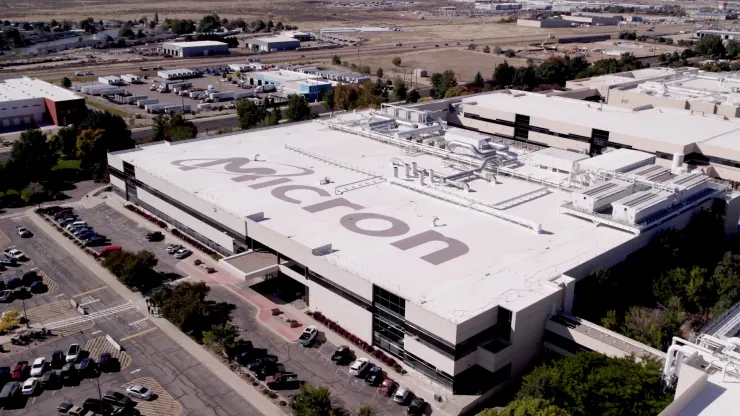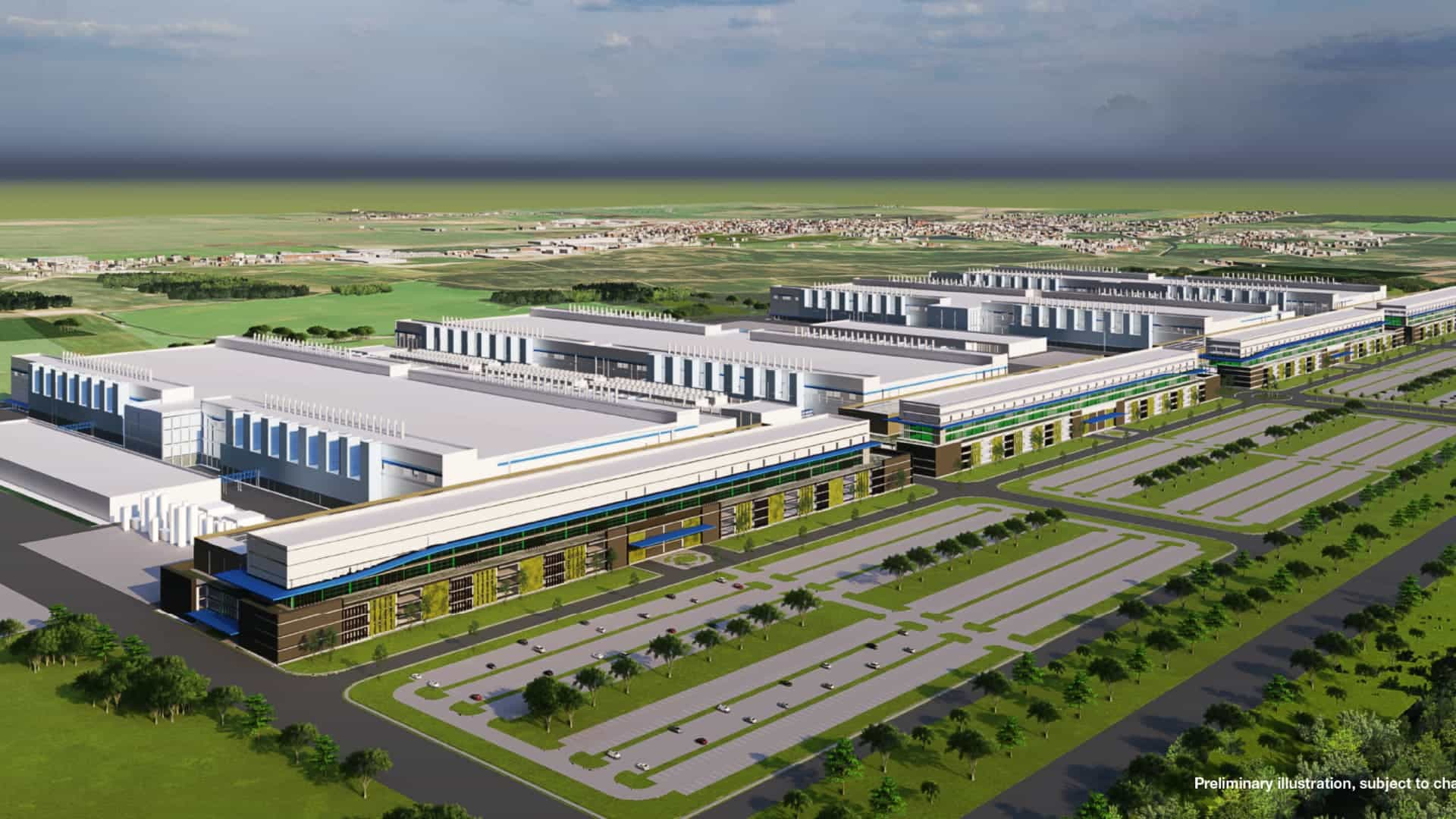Memory chips are at the center of all devices, helping store and access data in smartphones, computers and the servers training generative artificial intelligence models.
Just three companies make more than 90% of the world’s dynamic random-access memory, or DRAM, chips. With Samsung and SK Hynix
both headquartered in South Korea, Idaho-based Micron is the only manufacturer in the U.S. — that has made it the latest target of China’s bans on U.S. technologies.
About a quarter of Micron’s revenue comes from China, and “about half that revenue is at risk,” Micron CEO Sanjay Mehrotra said in an interview.
Meanwhile, Micron is doubling down on U.S. manufacturing. Its current leading-edge chips are made in Japan and Taiwan, but Micron is aiming to bring advanced memory production to the U.S. starting in 2026 with a new $15 billion chip fabrication plant in Boise, Idaho. Micron celebrated its 45th anniversary in October by pouring the first cement at the new fab.
The facility is located next to Micron’s huge research and development facility.

Micron’s existing research and development facility in Boise, Idaho.
“Memory is very cost-sensitive and we have to get economies of scale to mass produce our chips on a level that meets the market demands,” said Scott Gatzemeier, Micron’s corporate vice president of front end U.S. expansion.
DRAM and NAND memory chips are a cheaper type of semiconductor than the high-powered central processing units from Intel and AMD and graphics processing units that sparked Nvidia’s growth. But multiple memory chips are needed to support each GPU or CPU, so making memory requires more fab space.
That’s why Micron is planning the biggest chip project in U.S. history, spending $100 billion over 20 years to build four 600,000 square foot fabs in upstate New York.
Mehrotra said that Micron's goal is to vastly increase the U.S. share of DRAM production, which he said currently sits at just 2%. That production comes from Micron's fab in Manassas, Virginia. The company is getting assistance from the federal CHIPS and Science Act, which offers billions of dollars to incentivize domestic production.
"With Micron's investments through CHIPS support in Boise, Idaho, as well as in Syracuse, New York, that 2% over the course of nearly 20 years will be changing to about 15% of the worldwide production coming from the U.S.," Mehrotra said.
 A rendering of Micron's planned four memory chip fabs it will build north of Syracuse, New York, spending $100 billion over the next 20 years.
A rendering of Micron's planned four memory chip fabs it will build north of Syracuse, New York, spending $100 billion over the next 20 years.
Micron and at least 460 other companies have applied for funds from the CHIPS Act. States are also offering incentives to entice chip companies. Micron said it's eligible for up to $5.5 billion from the state of New York for the four fabs it's building just north of Syracuse. New York Gov. Kathy Hochul signed the state's Green CHIPS Act into law last year.
Micron says construction in New York will begin at the end of 2024 and chip production there will start in 2027. With both Idaho and New York fabs online, Mehrotra told CNBC that Micron plans to increase the share of chips it makes in the U.S. from 10% to nearly 60% in the next two decades.
▼▼▼
AMD China to Experience Massive Downsizing, Radeon Technology Group Affected The Most
Kioxia and Western Digital Merger This Month, Creating an Unbeatable Global Flash Memory Powerhouse
Israel Chip Maker Tower Makes Second Bid to Enter India with Fab Unit
Nokia to Axe up to 14,000 Jobs to Cut Costs
Fujitsu to Sell Nagano Plant to Leading Printed Circuit Board Manufacturer, FICT
......
Read more latest news about the PCB and semiconductor industry here
+86 191 9627 2716
+86 181 7379 0595
8:30 a.m. to 5:30 p.m., Monday to Friday
